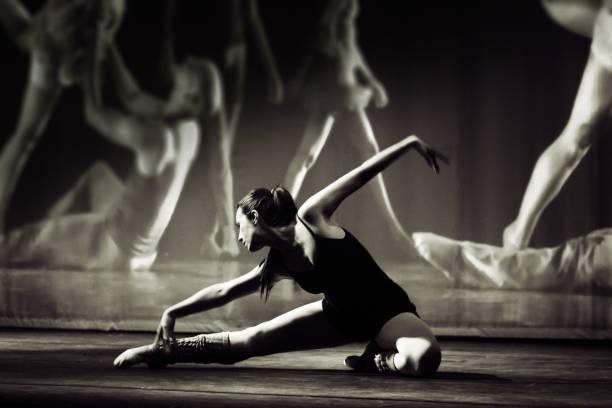This text was written by a TecMundo columnist; learn more at the end.
Research has reinforced that physical movement through exercise is a treatment for mental health issues, as well as psychotherapy for depression and anxiety, and medications such as antidepressants and anxiolytics, respectively. But it seems we are not like lab rats running on wheels.
We humans are more complex and the activity needs to be meaningful to our lives, sustained throughout life, and therefore we reap the benefits.
The truth is that our contemporary environment practically no longer requires movement. Postmodernity stands out for the fact that we can obtain almost everything we need and want with a minimum movement of our thumbs on the screen. The same device is making us hyper-connected and linked to an increase in mental health disordersJonathan Haidt points out: best seller “Anxious Generation”.
Getting up off the couch to exercise (and putting down your phone) is a challenge for everyone, but especially for people with mental health issues, who can face a paradox: they want to exercise to improve their condition because they know it will be good for them, but it also limits them, preventing the desired effects from occurring.
Considering that the positive effects on mental health are not just any body movement, a recent study has highlighted an effective method for psychological and cognitive health that has been rooted in our genes since the beginning of our species: dance.
Explore the work
The review study, which brought together other studies conducted with people aged 7 to 85, including audiences such as patients with Parkinson’s disease, school and university students, hospital workers, patients with heart failure, fibromyalgia patients and others, showed that dancing can be as effective as other methods for brain health. The article was published in the renowned scientific journal Sports Medicine Early 2024.
Various types of dance were used, including aerobics (Zumba, Step Dance), theatrical dance styles (modern, jazz), ballroom dance types (rumba, waltz, jive, Latin American, salsa, rock and roll), and cultural dances (line dance, qi gong, belly dance, folk dances from Brazil, Argentina, Greece, England, Ireland, and Poland).
The good news is that regardless of gender dance was able to improve a number of psychological and cognitive aspectsemotional well-being, depression, motivation, social cognition, and some aspects of memory, but not anxiety. Such positive effects occurred at levels comparable to other types of physical activity, such as walking, team sports, martial arts, and weight training.

Looks like the dance is really A way for people to express their love for lifeThis is an issue that can be critical in patients with depression, the most disabling illness in the world.
A recently published study conducted by the Laboratory of Research on Leisure and Physical Activity (Laplaf) at the State University of Santa Catarina (UDESC), with which I was able to collaborate, has shown that jazz dancing is effective in reducing anxiety and depression in menopausal women. The effects start from the first month and last for months.
Prof. Dr. Adriana Guimaråes, one of the university’s top researchers and leader of the research group, says: “Dance practice is considered an alternative therapy and is combined with traditional medical treatments.It stands out with its use and compatibility in the treatment of certain diseases such as epilepsy, Parkinson’s, dementia, breast cancer, depression and anxiety.”
Regarding how dance demonstrates its positive effects, Guimarão comments: “with its features that integrate sensory-motor elements with audiovisual stimuli and at the same time promote socialization, Dance is a therapeutic practice that can be used as an adjunct treatment for mental health problems that are increasingly common around the world. They are often characterized by abnormal combinations of thoughts, perceptions, emotions, and behaviors that can also affect social relationships.
Dance to be happier
The researcher also emphasizes: “In this context, dance can play a role in facilitating social interactions, helping participants feel less lonely, improving quality of life and increasing motivation, ultimately supporting emotional, cognitive, physical, spiritual and social, and bringing with it the results that its main components, body movement, expression, creativity and communication, are based on the fact that the mind, body, emotional state and relationships are interrelated, that is, those who dance are happier”.
Most people know that physical exercise is good for your health, yet this knowledge alone has not changed behavior.
It is not possible to continue an exercise that is considered boring or monotonous to the extent that it will provide benefits in our lives. Dance, which is as effective as other methods, shows itself as a way to move the body, but it is fun. Dance to live better and therefore more.
***
Fabio Dominski He holds a PhD in Human Movement Sciences and a Diploma in Physical Education from the State University of Santa Catarina (UDESC). He is a university professor and researcher at the Laboratory of Sport and Exercise Psychology (LAPE/UDESC). He does scientific dissemination on social media and in podcast available on SpotifyAuthor of Physical Exercise and Science – Facts and Myths.
Source: Tec Mundo
I’m Blaine Morgan, an experienced journalist and writer with over 8 years of experience in the tech industry. My expertise lies in writing about technology news and trends, covering everything from cutting-edge gadgets to emerging software developments. I’ve written for several leading publications including Gadget Onus where I am an author.













